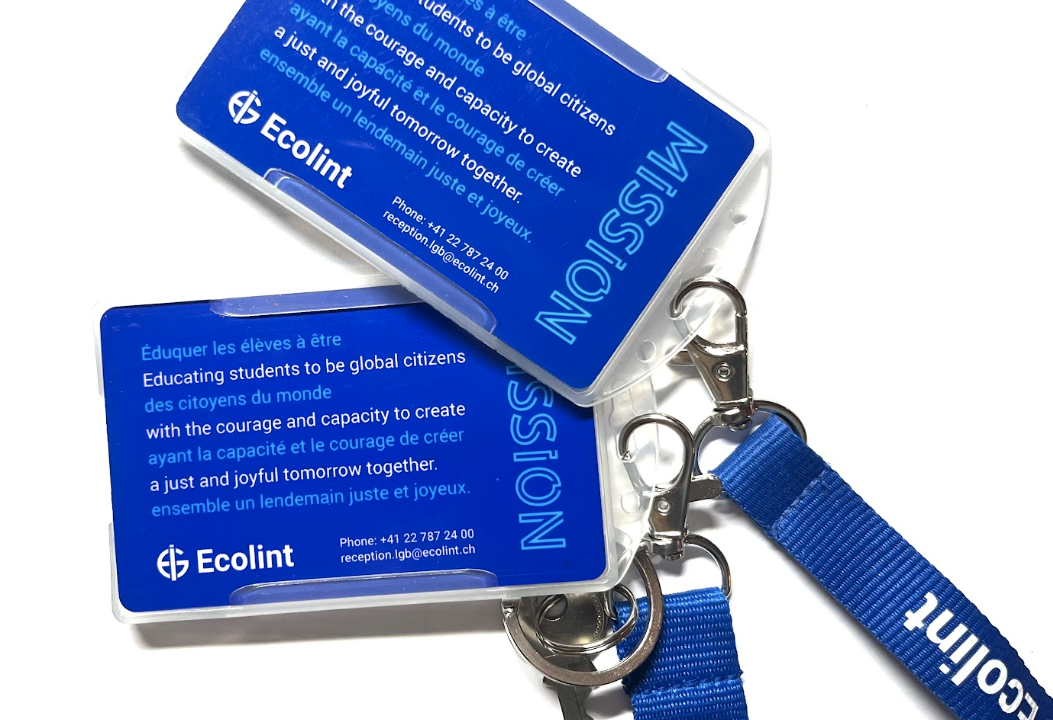By Yunseo Lee, Year 12
As many LGB students will know from experience, losing or leaving your student ID card at home results in a disastrous day. From having to run to the reception to get a Visitor badge, to begging your friend to buy you lunch, to ignoring your stomach grumbling at the just-baked pile of cookies after school, it’s truly a nightmare. Especially with the recently heightened security measures, it has become even more important to bring your student IDs to school every morning, as otherwise you risk being late to your lessons.
Living our busy everyday lives, we grow unaware of how often our ID cards are needed on campus until the unfortunate occurrence of one of these days. Apart from enabling you, upon its inspection, to enter the school grounds, your ID card –or “caf card,” as it is more affectionately known among LGB students – has a range of other roles: allowing you to borrow books from the library, set foot inside the STEM Centre, purchase binders from the bookroom, and pay for food at the cafeteria (hence its nickname). Using your caf card this often, every day, have you ever wondered how exactly it does all these things, and so quickly? Well, its secret lies in information technology.
Barcodes
We all must admit that we don’t pay much attention to what’s on our caf cards. Save for a number of very attentive students, few would know that next to your school picture, student number, and the admirable Ecolint mission statement, a small barcode lives in the lower left hand corner of your card. These barcodes are, in fact, unique to each and every student that attends LGB.
A typical barcode consists of black and white bars of varying widths. (In reality, barcodes have lines of equal width; it just doesn’t look like it because our eyes can’t tell each apart when there are multiple black or white lines in a row.) It is the distinctive sequence of these bars that makes barcodes specific to each LGB student, the personalised set of lines identifying you and your information.
However, the code itself is only half of what makes it work. Barcodes need to be scanned in order for us to access, pass on, or log information, and this is where barcode scanners come in. The black lines absorb light whereas the white lines reflect light, so as the barcode scanner beams light at the card, it recognises where light gets absorbed and where it gets reflected on the barcode. It then converts this pattern into computer language; black lines translate to 1 and white lines to 0. This series of numbers is then put into a computer algorithm which finds your information.
RFID (Radio-Frequency Identification) and NFC (Near-Field Communication)
But as you might recall, at school, we don’t scan our caf cards with anything even remotely resembling a typical barcode scanner. We simply prod our cards at a mysterious black box-shaped object, and somehow the doors open, the ‘ding’ sounds, and the printer produces your speech.
The mysterious black box-shaped objects are called RFID readers. We have two types on campus: the large square ones at the entrances to the school as well as the various buildings; and the small rectangular ones at the cafeteria checkout counters.
RFID, short for radio-frequency identification, refers to the method of identifying something or someone using extremely thin chips that can be read by radio waves. When the radio waves from an RFID reader reaches an RFID chip, in your caf card, for instance, it returns the signal, allowing the reader to access your information from the chip. RFID is different from barcodes in that it doesn’t require the chip (or code) to be in the direct line of sight to be recognised, as well as that the information stored in the chips can be updated in real time. RFID is used in motorway toll pass cards, item tags at shopping centres, and bibs on marathon runners as well as student ID cards like our own, as it is very effective for keeping track of constantly changing information, such as payments at school cafeterias.
Another rising technology in the field is NFC (Near-field communication), which allows for contactless data transfer. Technically, it is a subset of RFID, but it is even smaller and more expensive, and its chips can be embedded in devices such as tablets and smartphones. NFC chips need a much shorter range of distance for connection and have an antenna which generates an electromagnetic field that can be detected by the NFC reader. You use NFC every time you use wireless pay, such as Apple Pay and Samsung Pay on your phone. NFC has been rapidly growing in recent years; perhaps it could be used in our caf cards in the future.
However, whereas these technological modes of identification are on the rise, it raises an ironic question that might have occurred to you at some point on a particularly unlucky morning: how does it make sense that even when you are there in physical form that you are denied entry or access, just because your ID card, the computer-comprehensible version of you, isn’t there? Undoubtedly, you cannot be more genuine in identity than in your own physical body, but currently these technologies seem to be unable to address these frustrating and ironic problems, trapping and shackling us behind bar(code)s. Recent developments in biotechnology have introduced possible solutions, one being biometric identification using fingerprints and facial recognition, as already implemented in many mobile devices such as phones or tablets. Unfortunately, it appears that we still have a long way to go before these technologies can be integrated into school settings. In the meantime, we must constantly remind ourselves to remember our caf cards every morning; hopefully, this newfound appreciation of its importance will someday save you from a lengthy reprimand about lates.



